We were up early and downstairs for a quick breakfast. Afterwards we walked to the Central Station to get our tickets and ride the train to Delft. We couldn’t figure out the ticket machines so had to wait in line to see a ticket agent and of course pay more for that (we found out it was because our credit cards don’t have chips yet so the machine wouldn’t accept them!). As we were using the ticketing office they upgraded us to first class seats. So with our tickets in hand and 10 minutes left before the train left we rushed through the station to find the correct train. Yay! We made it and at 10:00 a.m. our train adventure began.
We sat and watched the Dutch countryside go by—wet and green with windmills everywhere. It was as if we stepped back in time. Then there were the tulip fields everywhere—although sadly none were in bloom at this time of year. This was such a great ride.
Once we arrived in Delft we quickly walked to the information center for a map. The town of Delft dates from 1075 with its property based on weaving and brewing. In 1645 there was a massive explosion of the national arsenal which destroyed most of the medieval town. The center of town was rebuilt and has not changed much since then.
Our first stop after that was the Neue Kerk (New Church) where we bought tickets to tour it and the Oude Kerk (Old Church). The Neue Here was built between 1393 and 1510 to complete. Much of the original structure had to be rebuilt after a fire in 1536 and the explosion of the armory in 1645.
It contains the magnificent tomb of William of Orange with his little dog at his feet. William should have been buried in his home town of Breda, but the Spanish were occupying it so he was buried here in Delft in the Neue Kirk. As a result the house of Orange (that is, the Dutch royal family) have continued to be buried in this church.
Then we were off to find the Oude Kerk (Old Church). This church is smaller and less impressive although it has gorgeous stained glass windows. It is rather stark as any imagery on the walls, etc. that hinted of Catholicism were erased in the iconoclastic riots in 1566 and 1572 when the church became a Dutch Reformed Church. There are two tombs to not miss in this church—that of Anton van Leeuwenhoek, inventor of the microscope, and Johannes Vermeer, the painter. Also be sure you stand back and look at the church tower—no you are not seeing things, it actually is leaning.
By this time we were hungry so we wandered around looking at the town and looking for a place to have lunch. The town seemed like a smaller version of Amsterdam with all the canals and tall, narrow houses. We decided to walk to the market square which is said to be the activity center of the town and is bordered by the Neue Kirk and the Stadhuis (Town Hall). We decided on the restaurant called Bagels and Beans where I had a salmon cream cheese sandwich and Mike had a smoked chicken and avocado sandwich. He drank hot coffee and I had iced coffee.
After lunch we walked a couple of blocks to the small Delft ceramics factories where one can look at (and buy if you are flush with cash) the beautiful Delftware. Delftware is blue and white tin glazed pottery developed from Majolica. It was introduced to the Netherlands in the 15th century by immigrant Italian potters. We considered buying a piece of Delftware—but prices were rather high and the question always is, how does one get such fragile items home on the plane?
Next stop was the Stedelijk Museum Het Prinsenhoff, William of Orange’s palace and the place where he was murdered. This was originally the convent of St. Agatha until the Dutch became “reformed” and dissolved all Catholic convents and monasteries. William of Orange took refuge here after he had a bounty put on his head in 1580 by the King of Spain (William had a role in the revolt of the Netherlands from Spanish rule). William stayed in the convent as he thought it was a safe place in a safe city, and it was until 1584 when an assassin shot him (be sure to see the bullet holes which are still visible in the stair walls).
This building houses Delft’s historic museum which has a wonderful collection of portraits, tapestries, antique Delftware, silverware, and medieval sculptures.
After the tour we walked into the garden/little park in the courtyard where there are Delft lampposts and a huge Delftware couch. Wow! As we walked around, we saw a sign for the Nonnerie (where the nuns went when William took over their convent). De Nonnerie is this really cool snack place in the basement of the building (be sure to look at the amazing ceiling!). So we decided to just had to have a glass of wine while we were in there.
Then we walked back to the Neue Kerke to buy some souvenirs and magnets commemorating our trip. By this time we were getting very tired and decided to walk to the train station where we took the next train back to Amsterdam. Once in Amsterdam we walked to our hotel to leave our purchases and decide on where we would have dinner (it does seem as if we go from one eating and drinking place to the next, doesn’t it?). We decided tonight to have dinner at Spanjer & Van Twist on the Leliegracht where we sat canal side. That was so much fun! I had a tuna steak on a salad and Mike had pork with mashed potatoes and we shared a carafe of white wine. As we sat there we could not believe that the time was almost 9 p.m. and it was still very much daylight. We are always surprised about that when we are in these more northern areas during the summer. After dinner we walked back to the hotel stopping along the way to get an ice cream cone for dessert.

 Delft, South Holland, Netherlands
Delft, South Holland, Netherlands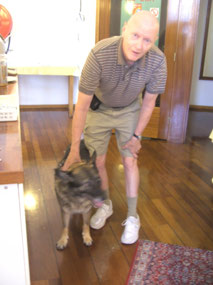
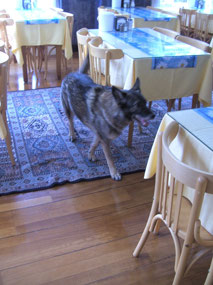
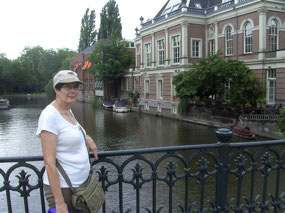
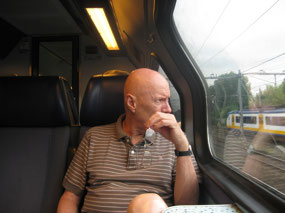




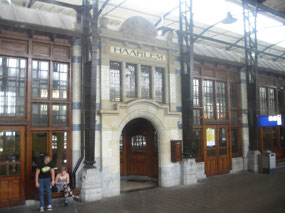

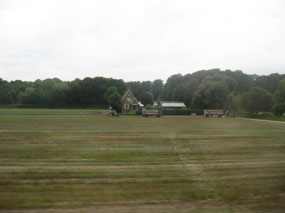
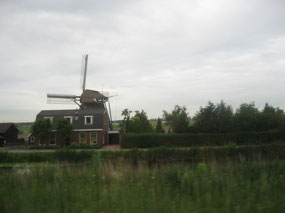
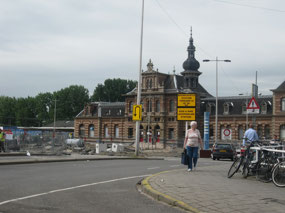
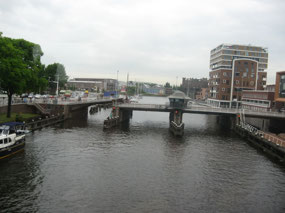
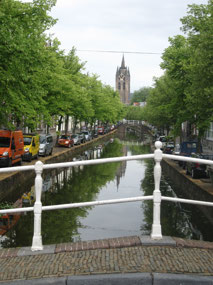
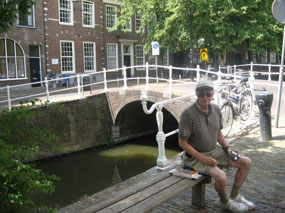
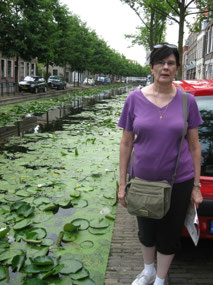
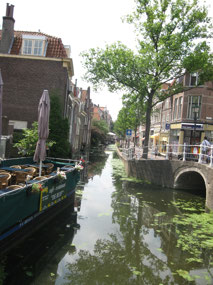
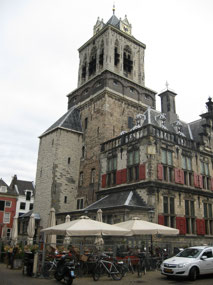
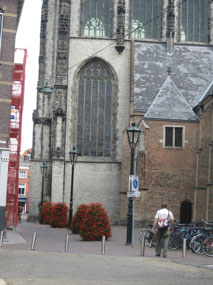
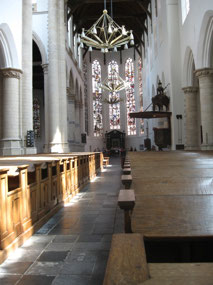
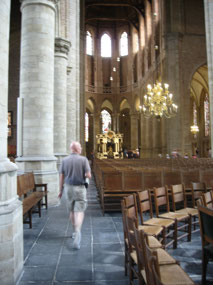
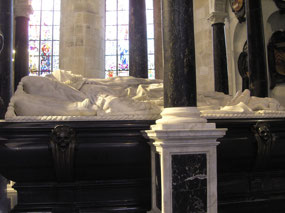
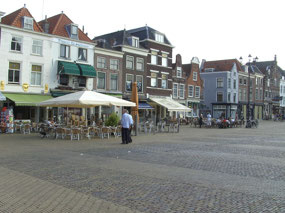

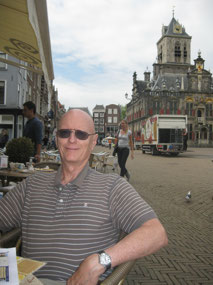
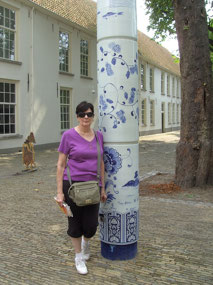
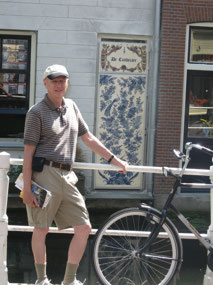
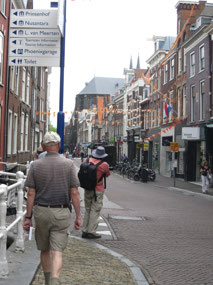
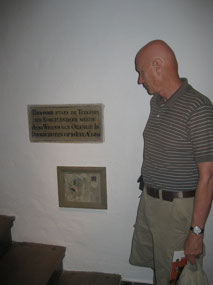
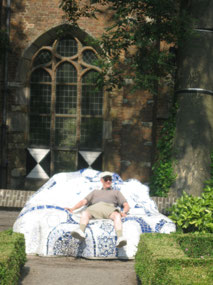

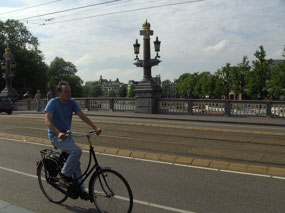
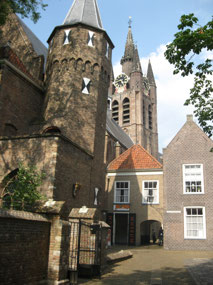
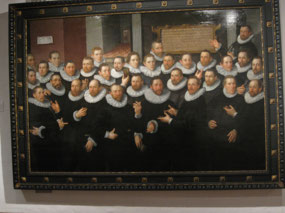
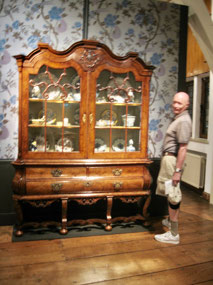
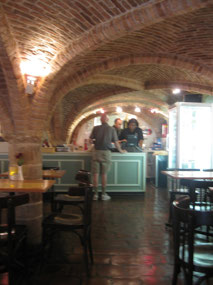
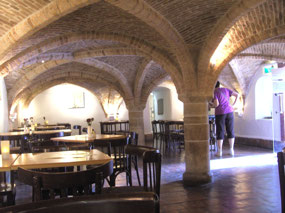
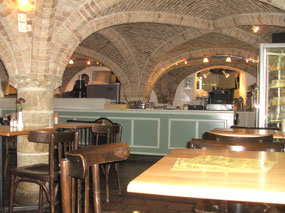
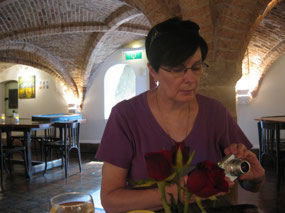

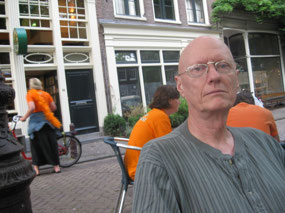
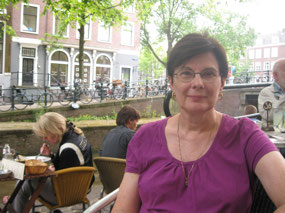
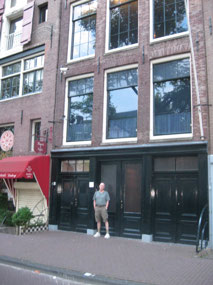
2025-05-23